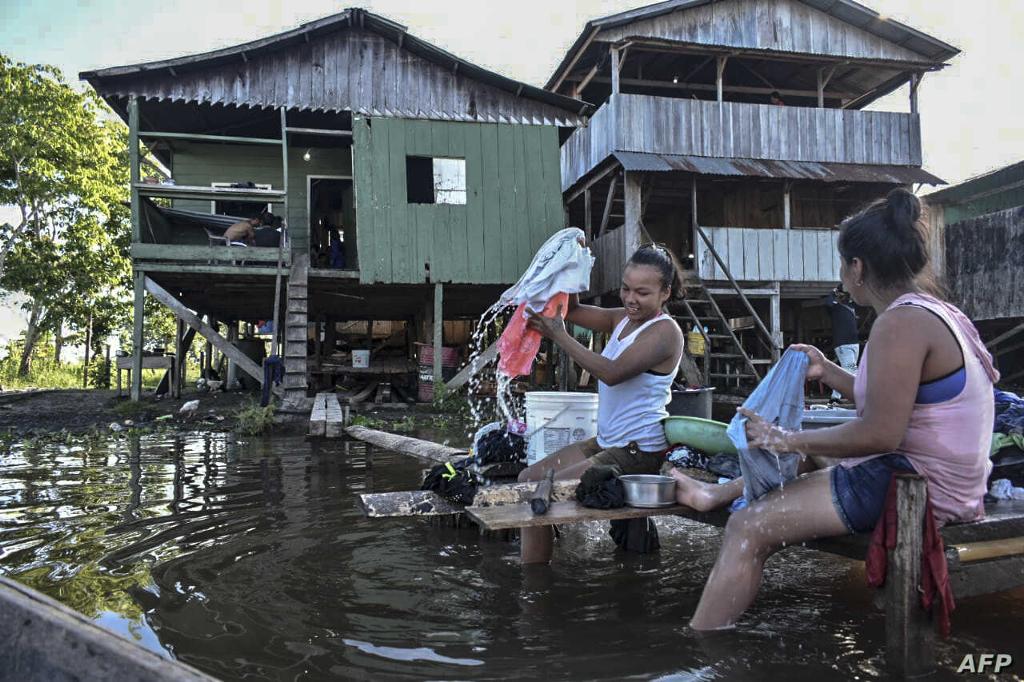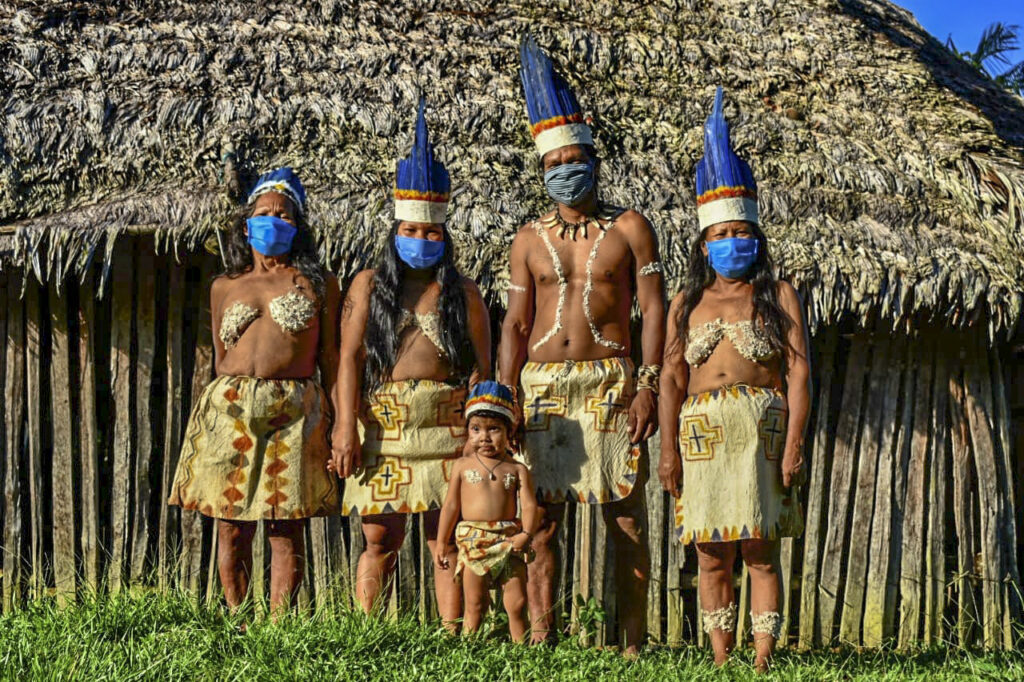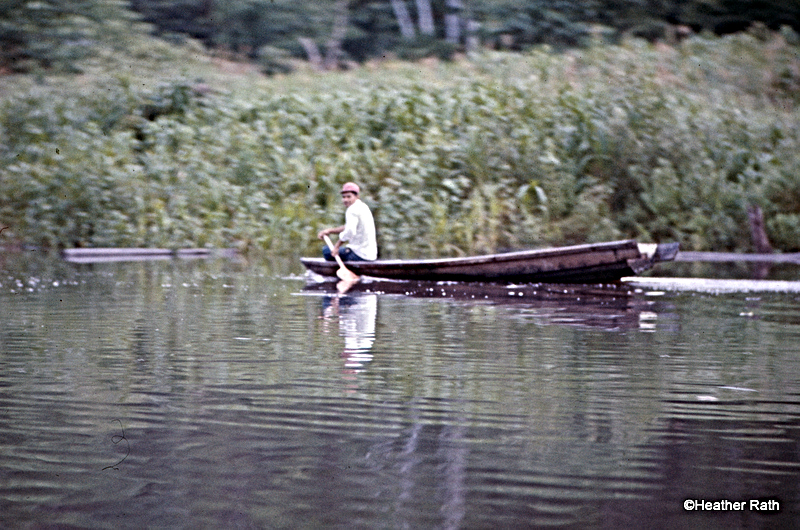The Amazon Then and Now
Then—1977

Iquitos
It is sunstroke hot and dripping wet humid when we touch down in the jungle town of Iquitos, Peru.
Iquitos is as far from the Atlantic coast, 3000 miles (4828 km), as it is from the Pacific.
Today, Iquitos is the world’s largest city that cannot be reached by road. It is linked to the outside world by air and by river.
In 1977, we arrived by air from Lima.
Green Mansions or Green Hell? An indigenous heaven in 77
In this area the jungle was so dense visitors called it green mansions or a green hell. Depended on your point of view.
Here is how the Fodor’s 1977 travel guidebook described this indigenous heaven: “you can fly over it for hours and not see anything but a carpet of green trees so closely knit that the ground never gets a chance to see the sunlight”.
Indigenous People
Area indigenous people depended on the mighty Amazon: manioc from the soil, fish from the river. They trapped animals; used endemic poisons to tip their arrows for shooting birds.
They slept in hammocks or on mats in palm and bamboo huts.
Meanwhile the verdant foliage continued to flourish relentlessly, spreading to their living areas.
Natural Resources
The Amazon offered precious natural resources like gold, oil and iron. It provided gifts of rubber, quinine, palm oil and medicinal plants.
Floating Belén
One of the few villages of this sort in the world at that time near to Iquitos, was Belén. Built on stilts and rafts on which lived Indigenous families, the city floated when the Amazon waters rose.
Today, Belén has sadly deteriorated. The city is now considered a slum of Iquitos. A dangerous place for visitors.
So, this was the mighty Amazon!
A speedboat transported us down the mighty river for a mile to the Yanayacu tributary. The Amazon was wide, muddy-coloured. Much trash and pieces of land floated in—and on—the water.

Life Along the Amazon
Indigenous women washed clothes in the water with their backs to the river. They did not want to see the river dolphins; to do so meant bad luck.
Amazon Lodge
Built on stilts. Constructed of wood, thatched roofs, miles of mosquito screening. No electricity. Yet the Amazon Lodge was cozy, inviting. Wildlife, like capybaras, wandered beneath and between the stilts.

Jivaro Community – Back to the Past
160 different indigenous communities lived in this area of the Peruvian jungle. The Jivaro, once head-shrinkers, soon recognized the value of tourism.
They explained, through our guide, how they hunted for food with blow-guns, using curare (poison) dipped darts to paralyze small game like armadillos, monkeys (when available), wild pigs, ducks, birds.
Blow-gun
Virile males lined up to demonstrate their deadly accuracy with the blow-gun using tree targets. We were mightily impressed.

Serious Bartering
One young man gestured he liked my husband’s hat. In return, we received a dart-holder with a woven strap. Its dried pumpkin (calabash) case was decorated with the edge of piranha teeth. As a bonus, small darts (not yet tipped with curare) were added to the holder.
Bartering was serious. For vanity items like combs and mirrors, they offered a show-stopper of a necklace, crafted using the body of a real, stuffed toucan. The thread of the necklace ran through the eyes of the bird.
I settled for a seed-beaded necklace instead.

Dug-out canoe after dark
We paddled silently down the river in a dug-out canoe under a full moon. Looking with flashlights for caiman. When caught in the beam of a flashlight, their eyes shine red.
Night Jungle Magic
Indigenous musicians played guitar, flute and drums amidst the light of lanterns and night sounds of the jungle. Magical peace.
Now — 2020
Amazonia
The Amazon watershed is within the borders of 9 countries: Brazil (67%), Peru (13%), Bolivia (10.9%), Colombia (6%), Ecuador (2%), Venezuela (1%) and Guiana/ Surinam/French Guiana (0.1%). This total region of the Amazon basin is called Amazonia.

Destroying the Amazon
Deforestation jumped 55% in the first four months of 2020 compared with the same period last year. People have taken advantage of the COVID crisis to carry out illegal clearances.
Logging, illegal mining, land clearances and wildfires are already at an 11-year high. Scientists predict we’re fast approaching a point of no return – after which the Amazon will no longer function as it should.
We are destroying the Amazon.
Population

35 million people live in this ecological area at risk. Of these, 3 million (385 communities) are Indigenous.
Language
Among the Indigenous population, 240 languages are from 49 linguistic families.
The COVID effect on Indigenous Human Libraries
The COVID effect has created unemployment, economic distress, hunger and fear among the Indigenous people.
Worse, any death of their elders/seniors (aka ‘human libraries’) means a permanent loss of that community’s oral history.
COVID cases in Amazonia
As of this writing, some 300,000 have been diagnosed with COVID. There are more than 12,000 deaths. Since many of the Indigenous people will not/cannot go to health care centres, accurate numbers of cases and deaths are not available.

Healthcare in the Amazon – Not
Due to the vulnerability of—and discrimination against—the Indigenous population, they fall easy victims to the virus.
Any related healthcare system to which they may have access is overwhelmed. And unable to provide proper medical care.
Many Indigenous communities have become isolated. Individuals do not seek hospital care for fear of catching COVID. Instead, they rely on traditional medicinal plants for treatment.
Help
Social agencies and religious fraternities, among them the Jesuits, are trying to help the Indigenous population during this crisis.
Using humanitarian assistance, political advocacy, member training and awareness, fund raising, they are working to help them.
Burning continues.
Meanwhile, the Amazon continues to burn.

Future in peril
Forty years ago, we were fortunate to visit a small, almost pristine, part of the Amazon.
Today, the future of this entire fragile ecosystem known as the breadbasket of the world—and its precious people—is in peril.
Shame on Us
Shame on us! And more power to those who continue to fight for the Indigenous of the Amazon and their amazing home: the precious flora and fauna of our earth’s beating heart.
Music of the Amazon
More Photos from 1977



To read more of our blogs, click here





